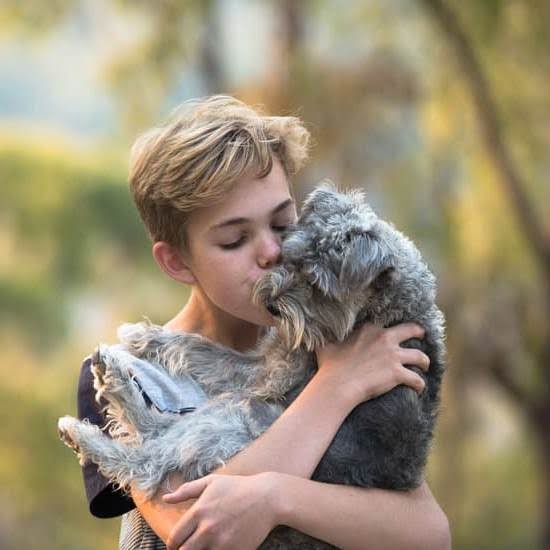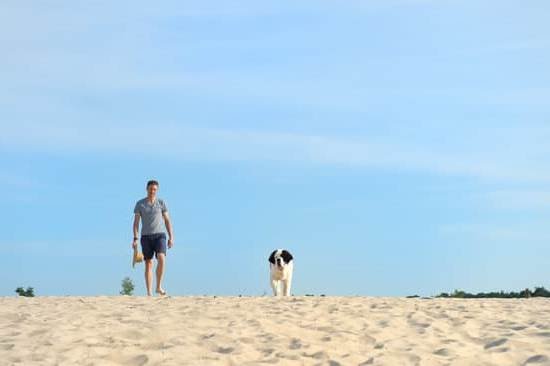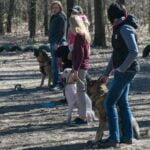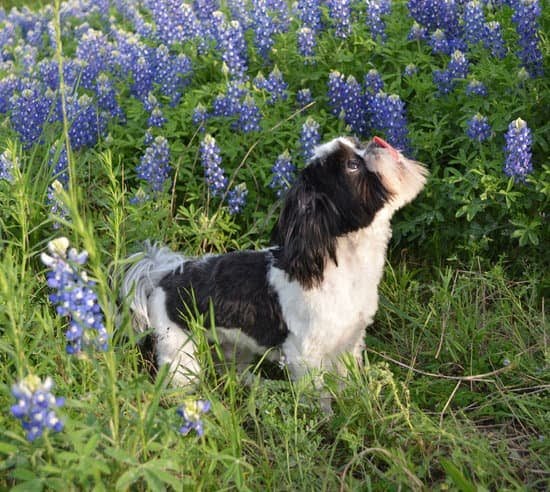Why Do Potty Trained Dogs Pee Inside
There are a number of reasons why potty trained dogs might pee inside, and the solution to the problem will vary depending on the individual dog and the circumstances. Some of the most common reasons why dogs might pee indoors even after they have been successfully potty trained include:
– Anxiety or stress: Dogs may start to pee indoors when they are feeling stressed or anxious, especially if they are not used to being left alone or if there is a lot of noise or activity in their environment.
– Excitement: Dogs may also start to pee indoors when they are excited, such as when their family comes home or when they are playing with their favorite toy.
– Lack of proper bathroom training: If a dog has not been properly potty trained, they may not understand that they are supposed to go outside to pee.
– Urinary tract infection: A urinary tract infection can cause a dog to start peeing more frequently, even if they have been successfully potty trained in the past.
– Old age: As dogs get older, their bladder muscles may weaken and they may start to have trouble controlling their bladder.
If your dog is peeing indoors, the first step is to try and determine the root cause of the problem. Once you know what is causing your dog to pee inside, you can work on correcting the behavior. If your dog is stressed or anxious, you can try to create a more relaxing environment for them or give them some stress-relieving toys to play with. If your dog is excited, try to redirect their energy by playing fetch or taking them for a walk. If your dog is not properly potty trained, start by taking them outside more frequently and reinforcing the behavior with treats or praise. If your dog is elderly and has trouble controlling their bladder, you may need to start using a litter box or help them outside to pee.
Is It Hard To Potty Train A French Bull Dog
There is no one-size-fits-all answer to this question, as the potty training process will vary depending on the dog’s individual personality and temperament. However, there are a few things that you can do to make the potty training process easier for your French bulldog.
First, it is important to start potty training your dog as early as possible. Puppies are typically easier to train than adult dogs, so it is best to get started as soon as you bring your new pup home.
Second, be sure to create a routine for your dog and stick to it as closely as possible. Dogs thrive on routine, and a predictable potty schedule will make the training process much easier.
Third, be patient and consistent. Dogs learn best through positive reinforcement, so be sure to praise your pup when he or she successfully eliminates in the correct spot. Likewise, don’t get frustrated if your dog has an occasional accident – simply correct the behavior and move on.
Ultimately, the potty training process will vary from dog to dog, but following these tips should help make the process a bit easier for your French bulldog.
How To Train A Dog To Go Potty Outside
There is no one-size-fits-all answer to potty training dogs, as each animal will learn at a different pace and may have different needs. However, there are some general tips that can help speed up the process and ensure your pet is successfully house-trained.
1. Start potty training as soon as possible. Puppies as young as 8 weeks old can be taught to relieve themselves outside, but it is always easier to train a dog when they are young.
2. Establish a routine. Dogs are creatures of habit, and will learn best when given a consistent routine to follow. Take your pet outside regularly (every few hours) and provide plenty of positive reinforcement when they go potty in the right spot.
3. Be patient. Don’t get frustrated if your dog doesn’t learn right away. Like with most things in life, potty training takes time and patience. By following the tips above and being consistent in your training, your dog will eventually get the hang of it.
How To Train Dog To Potty In One Spot
It’s a common challenge for new dog owners – teaching their furry friend how to potty in one specific spot. Fortunately, it’s a skill that can be easily learned with a bit of patience and consistency. Here are a few tips to help get your dog on the right track:
1. Choose an appropriate spot. When it comes to potty training, it’s important to pick an area that is easily accessible and won’t be too difficult for your dog to get to. For instance, a spot near the back door is ideal, as it’s convenient for both you and your pet.
2. Use positive reinforcement. When your dog successfully eliminates in the correct spot, be sure to praise them enthusiastically and give them a treat. This will help reinforce the behavior and make them more likely to repeat it in the future.
3. Be patient. It may take a little while for your dog to get the hang of things, so be patient and consistent with your training. If you get frustrated, your pet is likely to pick up on it and it will only make the process more difficult.
With a little effort and patience, you can have your dog potty trained in no time!
When Are Dogs Potty Trained
There is no one-size-fits-all answer to this question, as the time it takes to potty train a dog will vary depending on the individual animal’s personality and innate abilities. However, there are a few general tips that can help make the process go more smoothly.
First and foremost, it is important to be consistent with your expectations and rewards. If you are only expecting your dog to pee outside occasionally, and only rewarding them for doing so sporadically, they are unlikely to get the message. Dogs are creatures of habit, and will quickly learn what behaviors earn them praise and treats.
It is also important to be patient. Dogs are not born knowing how to potty train – it is a skill that must be taught. Some animals may take a little longer than others to learn the ropes, but with patience and consistency on your part, they will eventually get it.
If you are having trouble training your dog on your own, it may be helpful to enlist the help of a professional dog trainer. They can help set up a training program that is tailored specifically to your dog’s needs and personality.

Welcome to the blog! I am a professional dog trainer and have been working with dogs for many years. In this blog, I will be discussing various topics related to dog training, including tips, tricks, and advice. I hope you find this information helpful and informative. Thanks for reading!





